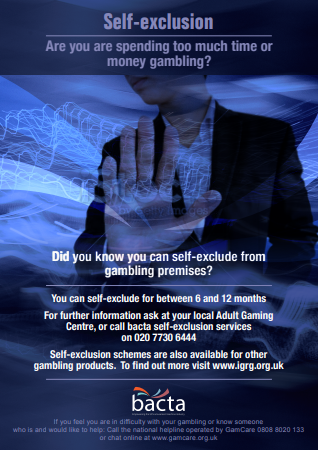
In today’s fast-paced world, it’s easy to get caught up in the daily grind and neglect our mental and emotional well-being. Whether it’s work, school, or personal relationships, we often find ourselves overwhelmed and in need of a break. However, when it comes to addiction recovery, taking a break is not just a luxury but a necessity. Self-exclusion is a powerful tool that individuals struggling with addiction can use to gain control over their lives and embark on a journey of recovery.
The Concept of Self-Exclusion
Self-exclusion is a process where individuals voluntarily remove themselves from specific places, activities, or social interactions that may trigger their addictive behaviors. It is a proactive measure taken by individuals to protect themselves and promote a healthy and supportive environment for recovery.
By self-excluding, individuals create a safe space where they are shielded from temptations and potential relapses. It empowers them to break the cycle of addiction and focus on their physical, mental, and emotional healing.
Types of Self-Exclusion
Self-exclusion can be applied in various areas of life, depending on the specific addiction and triggers. Here are a few common types of self-exclusion:
1. Social Self-Exclusion
Social self-exclusion involves removing oneself from social circles or certain individuals who may enable or encourage addictive behaviors. This could mean distancing oneself from friends or acquaintances who engage in substance abuse, gambling, or other harmful activities.
<img src=”social-self-exclusion.jpg” alt=”Illustration of friends standing apart” />
2. Environmental Self-Exclusion
Environmental self-exclusion involves avoiding specific locations or environments that may trigger addiction cravings. For example, someone recovering from alcohol addiction may choose to avoid bars, parties, or other places where drinking is prevalent.
<img src=”environmental-self-exclusion.jpg” alt=”Illustration of person avoiding a bar” />
3. Digital Self-Exclusion
Digital self-exclusion focuses on limiting or eliminating one’s exposure to online platforms, websites, or apps that may contribute to addictive behaviors. This type of self-exclusion is particularly relevant in cases of excessive social media usage, online gambling, or pornography addiction.
<img src=”digital-self-exclusion.jpg” alt=”Illustration of person disabling social media accounts” />
The Benefits of Self-Exclusion
Self-exclusion offers numerous benefits for those undergoing addiction recovery:
1. Increased Focus on Recovery
By removing oneself from triggering environments or social circles, self-exclusion allows individuals to center their energy and attention on their recovery journey. Without distractions, they can fully commit to therapy, self-reflection, and developing healthy coping mechanisms.
2. Breaking the Cycle of Temptation
Self-exclusion provides a physical barrier between individuals and their addictive triggers, minimizing the chances of succumbing to temptation. It helps break the familiar pattern of behaviors and creates a new, addiction-free routine.
3. Building Willpower and Self-Control
Self-exclusion is not about running away from problems but about facing them head-on. By actively avoiding triggers, individuals can strengthen their willpower and enhance their self-control. This newfound strength can support them not only in recovery but also in facing challenges in other areas of life.
Tips for Effective Self-Exclusion
Self-exclusion, when done properly, can significantly contribute to one’s recovery success. Here are some tips to enhance the effectiveness of self-exclusion:
1. Identify Triggers and Create Boundaries
Take the time to identify specific triggers that contribute to addictive behaviors. Once identified, establish clear boundaries about what places, people, or situations to avoid. By setting specific limits, it becomes easier to stick to the self-exclusion plan.
2. Seek Support from Loved Ones
Informing friends, family, or support groups about the self-exclusion plan can provide an additional layer of accountability. Loved ones can offer encouragement, guidance, and help avoid potential triggers in social settings.
3. Find Alternatives and Healthy Coping Mechanisms
Replace addictive behaviors with healthier alternatives and coping mechanisms. Explore new hobbies, engage in physical activities, or seek professional therapy. By filling the void left by addiction, individuals can establish a fulfilling and balanced lifestyle.
Conclusion
Self-exclusion is not an admission of weakness but a courageous step towards recovery. It allows individuals to prioritize their well-being and create a supportive environment that nurtures their journey to a healthier life. By taking a break and removing themselves from triggering situations, individuals can find the strength and clarity they need to embrace a future free from addiction.